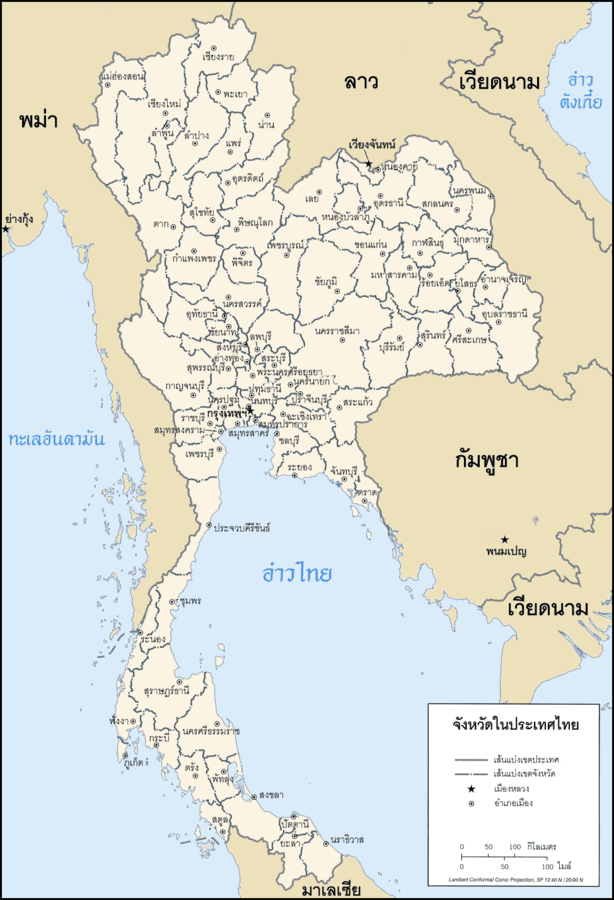Thailand Economy Overview
Thailand is the 22nd largest export economy in the world. It enjoys a positive trade balance of $34.3 billion after deducting its annual import total of $227 billion from the $262 billion achieved in export sales.
The GDP of Thailand is calculated as $505 billion, which results in a GDP per capita of $7,274.
This guide provides an overview of Thailand’s economy, including the country’s primary imports and exports.
Contents
Thailand’s Top Exports
Here is a breakdown of the most important products exported by Thailand, both commodities and other notable exports.
Commodity Exports
- Refined petroleum – $7.84 billion
- Rice – $5.77 billion
- Rubber – $4.63 billion
- Gold – $4.41 billion
- Diamonds – $1.52 billion
If you’re interested in trading some of these commodities, you can jump to our list of recommended regulated brokers in at the end of the page.
Other Notable Exports
- Office Machine Parts – $18.6 billion
- Cars – $10.9 billion
- Integrated Circuits – $9.54 billion
- Delivery Trucks – $9.21 billion
- Vehicle Parts – $8.23 billion
Thailand’s Top Imports
Here is a breakdown of the most important products imported by Thailand, both commodities and other notable imports.
Commodity Imports
- Crude petroleum – $23.7 billion
- Gold – $7.94 billion
- Petroleum gas – $6.96 billion
- Refined petroleum – $4.94 billion
- Refined copper – $2.57 billion
Other Notable Imports
- Integrated Circuits – $9.57 billion
- Vehicle Parts – $6.58 billion
- Broadcasting Equipment – $4.64 billion
- Office Machine Parts – $4.09 billion
- Planes, helicopters and/or spacecraft – $2.43 billion
Most of Thailand’s imports are received from China ($45.6 billion), Japan ($31.6 billion), Malaysia ($13.9 billion), the United States ($12.8 billion), and Singapore ($9.86 billion).

Details on Thailand’s Imports/Exports
Refined Petroleum
Exports of refined petroleum account for 3% of Thailand’s total annual exports and the country has a 1.04% share of a global market that is worth $753 billion annually.
Thailand’s refined petroleum is primarily destined for Singapore (28.5%), Cambodia (19.9%), Vietnam (13.6%), and Laos (11%).
Rubber
Thailand is the biggest exporter of natural rubber in the world and has a 33.3% share of a global export market that is worth $13.9 billion annually. Indonesia is short on its heels with a market share of 31.7%.
Almost half of Thailand’s rubber (42.4%) is destined for China.
Rice
The global rice export market is worth $25.4 billion annually. Thailand is the second-largest exporter with a 22.7% market share, behind India on 29.3%.
Thailand was also the fastest-growing rice export market between 2017 and 2018, when it increased exports by $2.77 billion to $5.77 billion.
Raw Sugar
Annual global sugar exports total $23.6 billion. Thailand is the second-largest exporting country with a 12.4% market share after Brazil’s 28.3% dominant share.
Between 2017 and 2018, Thailand showed the biggest growth of raw sugar exports when it increased by $921 million to $2.94 billion.
Gold
Thailand is the 16th largest gold-exporting country in the world with a 1.45% share of an annual global market that is worth $305 billion.
Most of Thailand’s gold is destined for Cambodia (38.7%), followed by Switzerland (34.3%, and Singapore (15.6%).
Interesting Facts About Thailand
- The official ceremonial name for the capital city of Bangkok is – Krungthepmahanakhon Amonrattanakosin Mahintharayutthaya Mahadilokphop Noppharatratchathaniburirom Udomratchaniwetmahasathan Amonphimanawatansathit Sakkathattiyawitsanukamprasit.
- Bangkok is the world’s most-visited city with 16 million tourists arriving each year.
- Thailand is the only country located in Southeast Asia that has not been colonized by Europeans.
Interested in Trading Commodities?
Interested in trading rubber, gold, rice, and other important Thai commodities? Start your research with reviews of these regulated brokers available in .
CFDs are complex instruments and come with a high risk of losing money rapidly due to leverage. Between 74%-89% of retail investor accounts lose money when trading CFDs. You should consider whether you can afford to take the high risk of losing your money.
Sources and Further Reading
- All figures are based on OEC 2018 calculations and projections unless otherwise stated.
- Learn more about the state of world government debt from our country debt clock pages.
- See our global economic indicator guide to more than 45 other countries.
- Get our full guide to trading commodities.
Also see our guides on stock, CFD, and commodity brokers to find out which online trading platforms are available in .
All currency is reported in US dollars.


